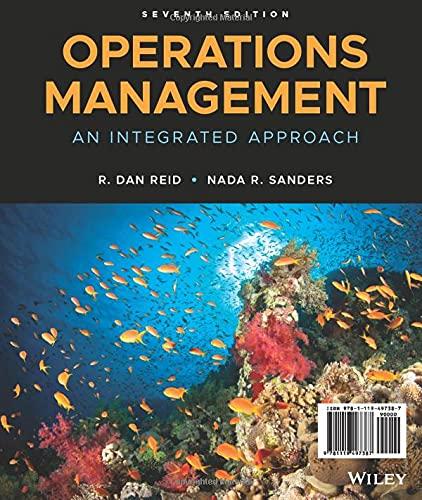Richard Haslett owns three bars in Santa Cruz located on the boardwalk. In September 1995, Richard hired
Question:
Richard Haslett owns three bars in Santa Cruz located on the boardwalk. In September 1995, Richard hired Kelly Warton as the business manager to take care of accounting and inventory. Her salary is $40,000, which works out to about $20 per hour.
After her first six months at work, Richard is dissatisfied with Kelly’s performance. Kelly seems to be spending so much time taking care of the inventory that the books are always late. Although Kelly has been using standard ordering policies (set in 1990), she claims that very often she finds herself dealing with rush orders to avoid stockouts. In most cases, rush orders mean compromising on quality and settling for lesser known brands. This results in a number of dissatisfied customers, and it also meant that Richard still had to take care of many accounting tasks. He had felt that with Kelly taking care of running the bars, he would have more time for his family and fishing. Before making a decision on whether to retain Kelly, Richard thought he should get another opinion on the inventory problem.
Cindy Haslett (Richard’s niece) has just finished a course in Operations Management. Richard offered to sponsor Cindy's summer vacation in Santa Cruz if she would help to study the ordering policies for the bars. Realizing that the inventory policies should be based on demand, Cindy first studied the weekly demand for 1994–1995 and forecasted the annual demand for the major items based on 52 weeks per year.
Discussions with Kelly revealed that orders were placed for each item when it reached its reorder point. She used the order and reorder points estimated by the previous stock manager. Kelly estimated that orders must be placed three weeks in advance in order to purchase and receive the correct brand. She spends about 30 minutes checking stock each time an order is placed. A study of the inventory records indicates that about 3% of the material are discarded due to spillage and broken bottles. Richard Haslett pays 9% interest on the debts for his business.

1. What is the cost of placing an order?
2. What is the holding cost for each type of liquor?
3. What is the optimal ordering policy (i.e., order quantity and reorder point) for each product? Assume a safety stock of 6 bottles for each item.
4. What information should Cindy provide Richard to convince him that the above policy is an improvement on the current policy used? Explain why the new reorder point is better, and show a comparison of the costs for the current and new order quantities for vodka.
Step by Step Answer:

Operations Management An Integrated Approach
ISBN: 9781119497387
7th Edition
Authors: R. Dan Reid, Nada R. Sanders





